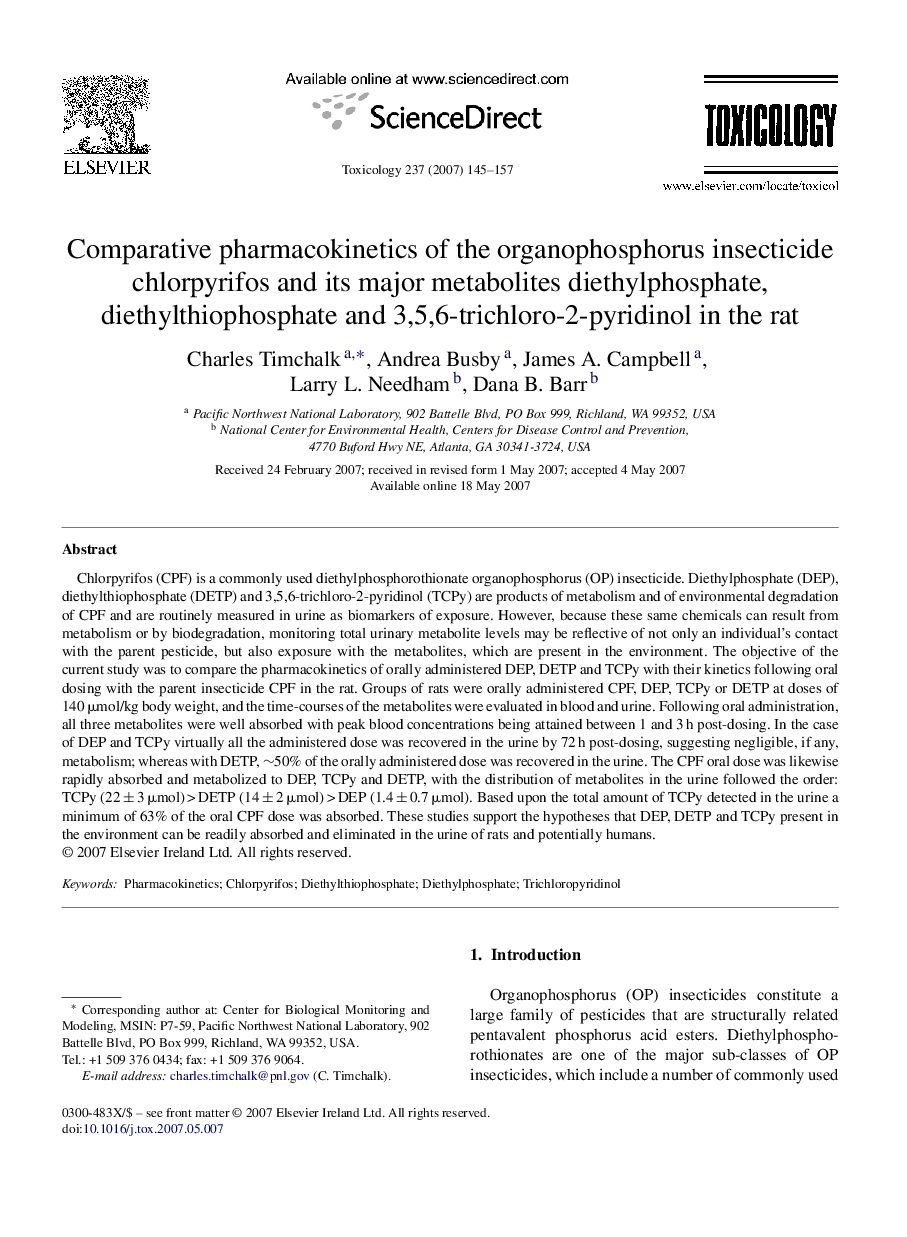| کد مقاله | کد نشریه | سال انتشار | مقاله انگلیسی | نسخه تمام متن |
|---|---|---|---|---|
| 2597751 | 1562419 | 2007 | 13 صفحه PDF | دانلود رایگان |

Chlorpyrifos (CPF) is a commonly used diethylphosphorothionate organophosphorus (OP) insecticide. Diethylphosphate (DEP), diethylthiophosphate (DETP) and 3,5,6-trichloro-2-pyridinol (TCPy) are products of metabolism and of environmental degradation of CPF and are routinely measured in urine as biomarkers of exposure. However, because these same chemicals can result from metabolism or by biodegradation, monitoring total urinary metabolite levels may be reflective of not only an individual's contact with the parent pesticide, but also exposure with the metabolites, which are present in the environment. The objective of the current study was to compare the pharmacokinetics of orally administered DEP, DETP and TCPy with their kinetics following oral dosing with the parent insecticide CPF in the rat. Groups of rats were orally administered CPF, DEP, TCPy or DETP at doses of 140 μmol/kg body weight, and the time-courses of the metabolites were evaluated in blood and urine. Following oral administration, all three metabolites were well absorbed with peak blood concentrations being attained between 1 and 3 h post-dosing. In the case of DEP and TCPy virtually all the administered dose was recovered in the urine by 72 h post-dosing, suggesting negligible, if any, metabolism; whereas with DETP, ∼50% of the orally administered dose was recovered in the urine. The CPF oral dose was likewise rapidly absorbed and metabolized to DEP, TCPy and DETP, with the distribution of metabolites in the urine followed the order: TCPy (22 ± 3 μmol) > DETP (14 ± 2 μmol) > DEP (1.4 ± 0.7 μmol). Based upon the total amount of TCPy detected in the urine a minimum of 63% of the oral CPF dose was absorbed. These studies support the hypotheses that DEP, DETP and TCPy present in the environment can be readily absorbed and eliminated in the urine of rats and potentially humans.
Journal: Toxicology - Volume 237, Issues 1–3, 31 July 2007, Pages 145–157